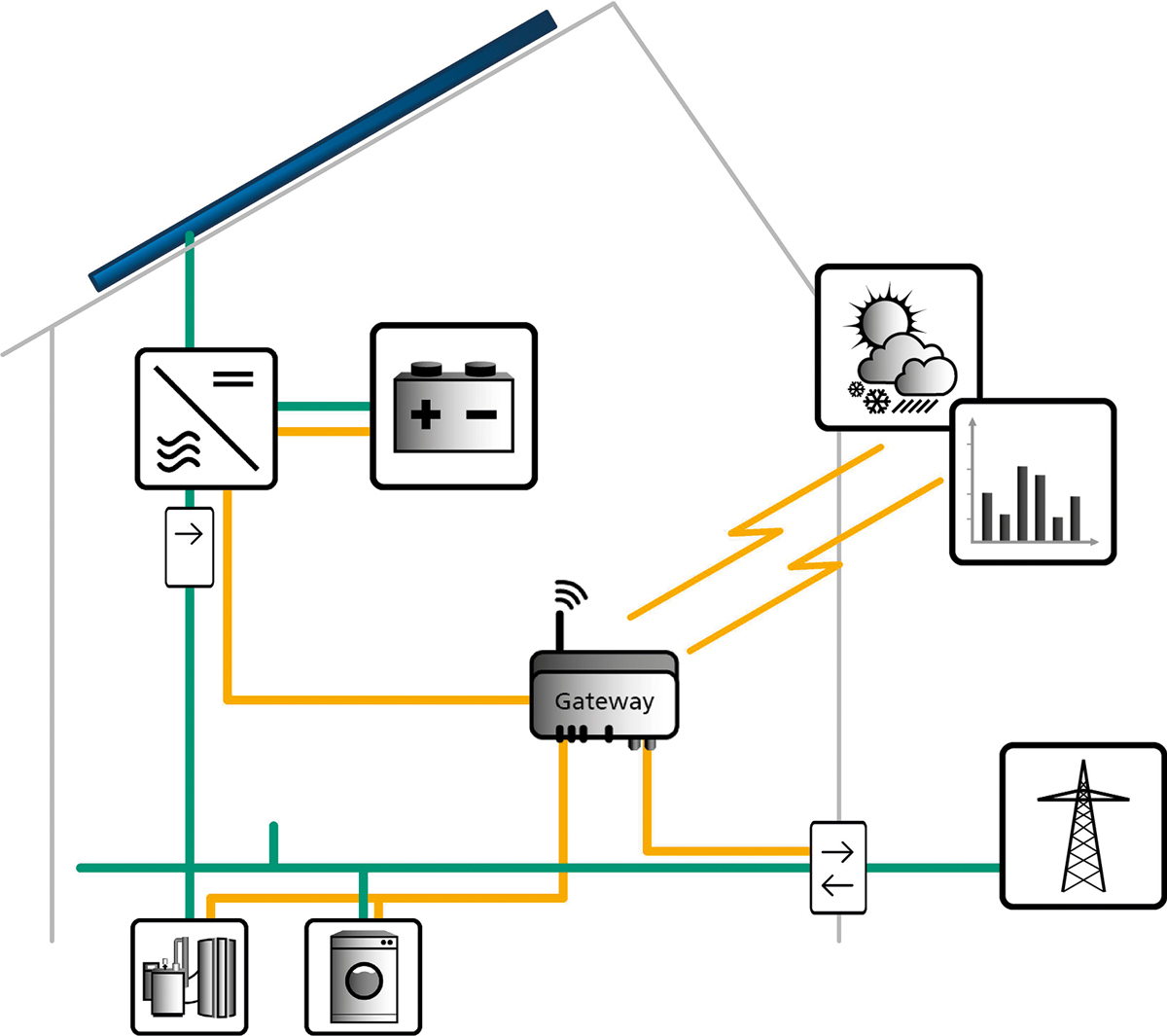| Duration: | December 2011 - November 2015 |
| Contracting Authority/ Sponsors: | German Federal Ministry of Economic Affairs and Energy (BMWi) |
| Project Partners: | Fraunhofer Institute for Integrated Circuits IIS, Erlangen; Fraunhofer Institute for Wind Energy and Energy System Technology IWES, Kassel |
| Website: | www.ogema.org |
OGEMA 2.0 – Innovative Energy Management Systems for Buildings in a Smart Grid
In future, decentralised electricity generators will have to meet more stringent requirements for grid-integrated operation and conform to market demands. In addition, local optimisation will play an important role. These tasks are carried out by energy management systems, which act as a key interface connecting local plants and higher-level systems. At Fraunhofer ISE, we are working on open-source energy management platforms, driver interfaces, data models and predictive optimisation algorithms. One current example is the grid-friendly operation mode of a PV battery system to reduce PV feed-in power around midday.
Commercially available PV battery systems are intended to maximise self-consumption. The control parameter used is the power at the building connection point. Grid-friendly operation demands a more complex control system which includes prediction of local generation and consumption, battery charging predominantly during peak power generation periods and provision of corresponding battery capacity. The energy management system, which is centrally integrated into the household grid, is responsible for data acquisition and processing, as well as optimising the energy flows.
In the ”Heiphoss“ project, we are developing corresponding predictive model algorithms. The run-time environment of the energy management gateway is provided by the ”OpenMUC“ software framework. ”OpenMUC“ has been developed at Fraunhofer ISE for several years as an open-source system. It now offers many system interfaces, including IEC 61850, and has already been successfully used in different projects. The technical requirements on an energy management system are: It must be interoperable, flexible under changing boundary conditions, secure and energy-efficient. In the ”Heiphoss“ project, a prototype of the new energy management system will be implemented in private buildings and evaluated in 2014 in a field trial. In the ”OGEMA 2.0“ project, we are investigating and developing further-reaching approaches for energy management systems such as security concepts for several users and abstract data models.
